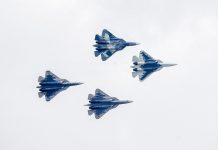The UK military is set to acquire hi-tech, fully digitized Challenger-3 tanks, which would help it meet its future battlefield requirements.
The announcement made by the UK Ministry of Defense has put to rest all the rumors about the legendary British cavalry regiments mothballing their armored fleet.
For decades, the armored columns have been at the forefront of an army’s conventional offensive and defensive tactics. Who can forget the M1 Abrams racing through the deserts of Iraq during the Gulf War, in the famous Battle of 73 Easting, or the 2003 Invasion of Iraq where the coalition swept through the country in no time.
The recent conflicts in Nagorno-Karabakh and Syria also witnessed the use of tanks, which are a symbol of dominance in a region.
The Challenger-3 MBT
The UK military has now signed an 800-million pound contract with Rheinmetall BAE Systems Land (RBSL) for its first “fully digitized” tank, named the Challenger-3. According to the deal, 148 out of a total fleet of 227 Challenger-2 tanks would be upgraded to Challenger-3 standard.
They would use the existing chassis, but with improvements to the turret — loaded with advanced features. The new tanks will have a lifespan until 2040.
The experience gained in modern battlefields made it imperative to enhance the tank’s survivability using more modern protection systems along with the conventional armor. Thus, these new Challenger-3 tanks will come equipped with a new modular armor complemented by an active protection system (APS).
The APS is a revolutionary technology first pioneered by Israel which developed its own systems like the Iron Fist and the first operational Trophy APS. These systems have been battle-tested and saved Israeli tanks many times from being hit by anti-tank missiles.
With the APS, the tanks are no longer ‘sitting ducks’ in the battlefield for enemy-guided missiles or rockets – giving a definitive edge to armored columns and is perhaps the most important 21st-century addition to military vehicles.
According to the British Ministry of Defense, the Challenger 3 will also undergo “full electromagnetic testing to ensure it is survivable in the most demanding of sensor saturated battlefields.”
Surprise Addition To Challenger
Meanwhile, there will be a surprise addition to its weapon system — a new 120 mm smoothbore cannon, which is perhaps the most “un-English” thing on a British tank.
In the history of British armored vehicles, this would be the first operational introduction of a smoothbore gun to a tank. All the previous British tanks had been armed with a rifled cannon.
“The British were adamant about rifled guns throughout their tank development history, which perhaps spans the entire tank history. They didn’t like the concept of smoothbores so much it sort of [sarcastically] became an ‘English’ thing,” a military expert who wished to remain anonymous told The EurAsian Times.
Another reason for the switch to smoothbore cannon is its compatibility with the NATO logistics chain. The current gun on the Challenger-2 [rifled L30A1] cannot fire the ammunition used by the smoothbore 120mm cannon on the German Leopard 2 tanks or the American M1 Abrams tanks used by many NATO countries.
This prevents the mutual resupply of tank ammunition between the British Army and the allied forces of other countries.
The Challenger-3 will also feature a new suite of sights providing tank commanders with enhanced day and night targeting abilities, making the platform a true ‘hunter-killer’ to find, track, and engage its targets quicker than its potential adversaries.
The tank will also be equipped with advanced tactical communication systems that would enable the crew to share and gather real-time data with other assets in the fighting brigade including attack helicopters and other ground vehicles.
Interestingly, the tank has also been designed to play its part in multi-domain warfare whilst retaining the ability to operate in the littoral environment (between the land and sea) in support of the Future Commando Force.
The FCF is a better trained, better equipped, specialized quick reaction force ready to deploy around the world immediately, on tasks such as warfighting, combat missions, and humanitarian duties.
“All in all, the British Army’s new and improved Main Battle Tank will pack a real punch and represents a major generational upgrade in capability. It will be Defence’s only 24-hour, all-weather, mobile, protected, precision, direct fire, anti-armor maneuver capability – and will be critical to Defence’s ability to deliver hard power, underpinning our credibility in the land domain and underwriting our commitments to our allies,” the UK Defence Ministry said.
And what about the remaining 78 tanks? Due to an increased focus on drones and cyberwarfare, these aging tanks would most probably be mothballed for spares and maintenance of the Challenger-3 fleet.
The British military is planning a major operational overhaul for its preparation of the future, highlighted in the recent Integrated Defense Review published earlier this year.
The plans suggested steps to increase the operational capability and readiness of the available equipment while purchasing more technologically superior impediments and develop new-generation warfighting abilities in the realm of space and cyberspace.




